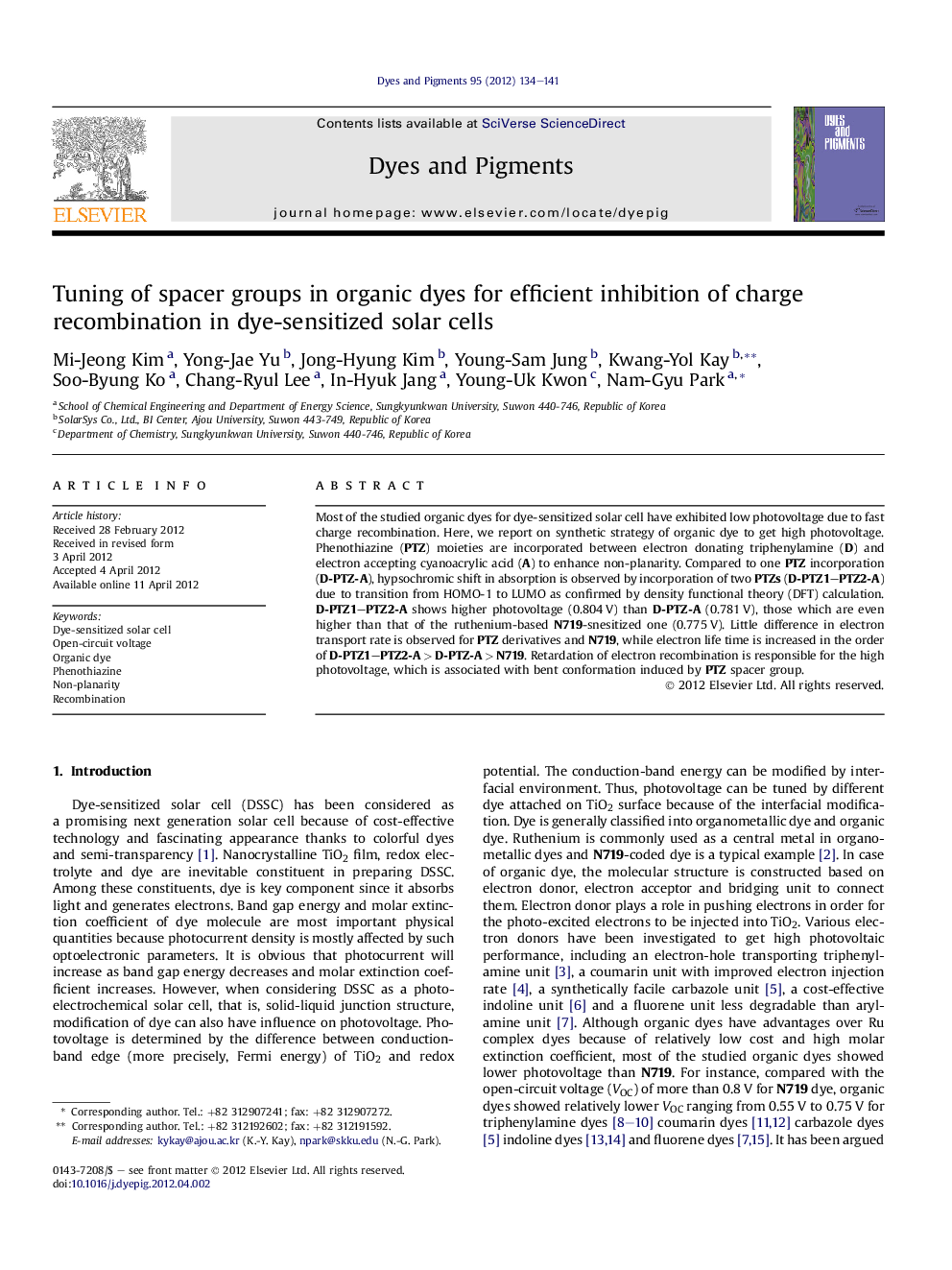| Article ID | Journal | Published Year | Pages | File Type |
|---|---|---|---|---|
| 176572 | Dyes and Pigments | 2012 | 8 Pages |
Most of the studied organic dyes for dye-sensitized solar cell have exhibited low photovoltage due to fast charge recombination. Here, we report on synthetic strategy of organic dye to get high photovoltage. Phenothiazine (PTZ) moieties are incorporated between electron donating triphenylamine (D) and electron accepting cyanoacrylic acid (A) to enhance non-planarity. Compared to one PTZ incorporation (D-PTZ-A), hypsochromic shift in absorption is observed by incorporation of two PTZs (D-PTZ1–PTZ2-A) due to transition from HOMO-1 to LUMO as confirmed by density functional theory (DFT) calculation. D-PTZ1–PTZ2-A shows higher photovoltage (0.804 V) than D-PTZ-A (0.781 V), those which are even higher than that of the ruthenium-based N719-snesitized one (0.775 V). Little difference in electron transport rate is observed for PTZ derivatives and N719, while electron life time is increased in the order of D-PTZ1–PTZ2-A > D-PTZ-A > N719. Retardation of electron recombination is responsible for the high photovoltage, which is associated with bent conformation induced by PTZ spacer group.
Graphical abstractFigure optionsDownload full-size imageDownload as PowerPoint slideHighlights► Non-planar spacer groups are incorporated in organic dyes. ► Increase in the number of phenothiazine spacer group increases photovoltage. ► Photovoltage of organic dye (0.804 V) is higher than that of N719 (0.775 V). ► Increased electron life time is responsible for high photovoltage.
